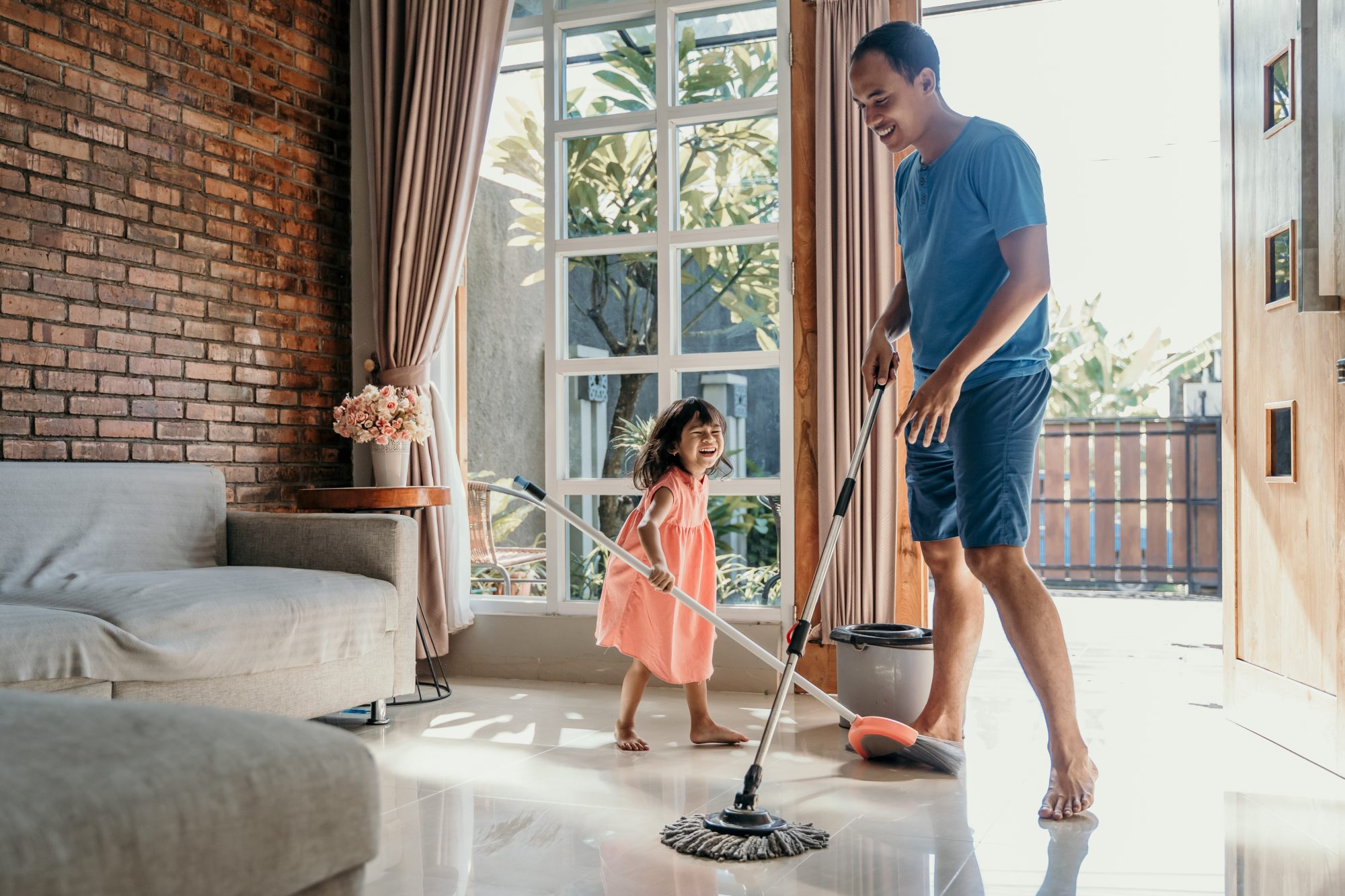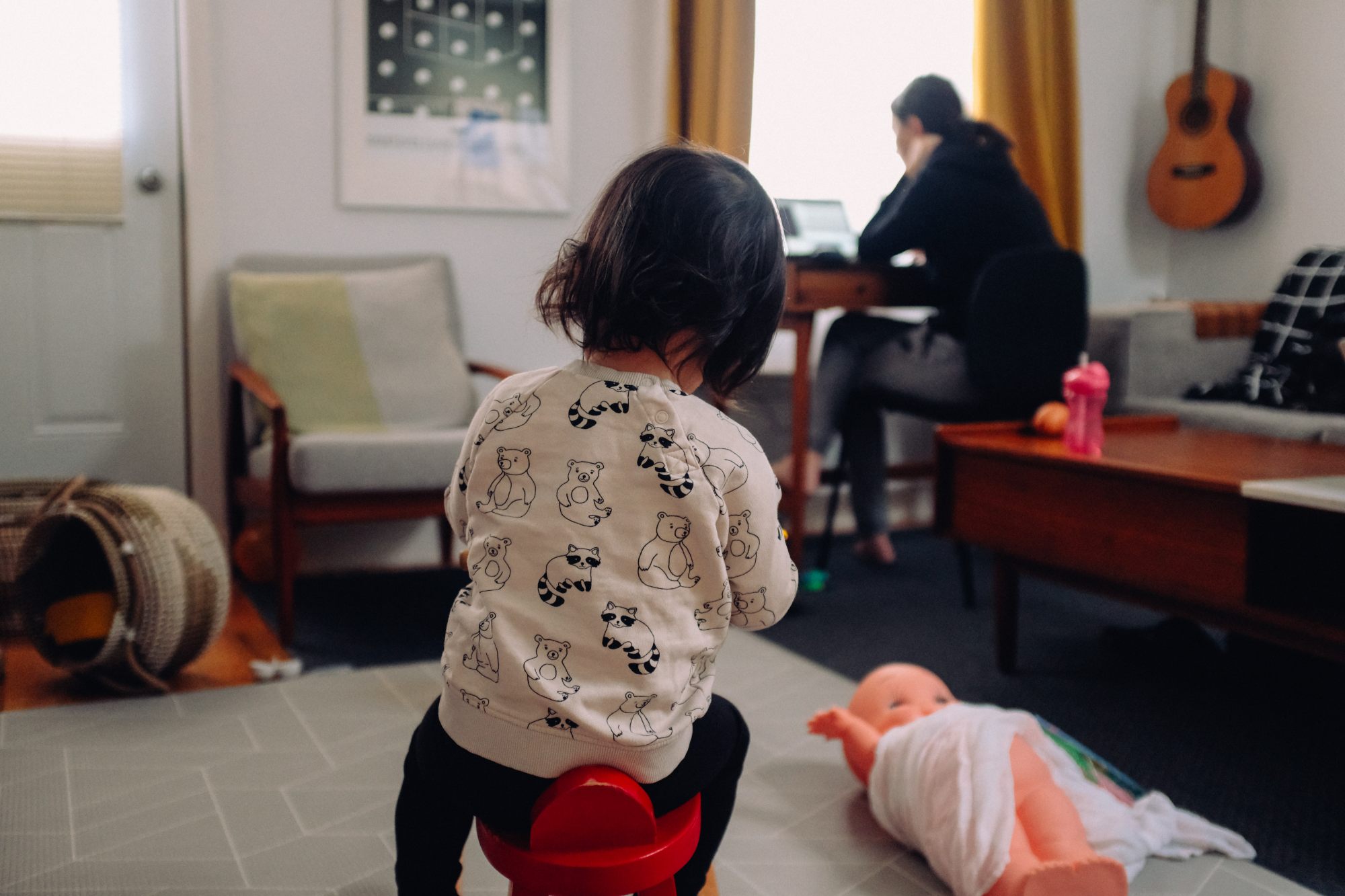Between Zoom meetings and homeschooling, trust us when we say that working from home with kids has been pushing every parent over the edge. If you feel like you’re going off the rails trying to juggle a full-time job and homeschooling, you’re not alone.
When your daily routine doesn’t feel so routine anymore, try these ten tips for working from home while homeschooling.
1. Schedule the Day – or Don’t
For some households, creating a schedule can help add some order to an otherwise wildly unpredictable day. One of the best time management tips for work-at-home moms is to schedule out time blocks – for both you AND the kids.
But forcing a routine on the chaos of homeschooling while working can be like trying to fit a round peg into a square hole. There will be a lot of pushing, shoving, friction – and probably a few savory words. Don’t fret if you just can’t make a semi-rigid schedule work. Remember that trying to force a schedule can create added stress.
Sometimes you just have to go with the flow, even if that flow changes every day. Even if your morning routine gets thrown off because the Cheerios are out of stock, don’t let it throw off your entire day.
2. Manage Your Expectations
If you don’t set realistic expectations, you’re setting yourself up for a one-way trip on the struggle bus.
When you’re creating a work-from-home schedule, plan on (constant) interruptions – even if you can close the door to your office and try to drown out the kids bickering in the living room.
There will be some days where you won’t be able to stick to those bedtime routines. Instead of letting it stress you out, let it go and accept that one day will not throw the universe out of alignment.
3. Set Priorities
Look – you’re not going to get everything done every day. One way to set your stay-at-home schedule up for success is by assigning daily task priorities.
Try breaking your daily tasks into three different categories: urgent, important, or non-important.
If you’ve got a presentation to complete before a conference call or your kid has a school project due tomorrow, place them into the urgent (or must do) category. Domestic chores (like dishes or laundry) might alternate between important and non-important, depending on the day.
Categorizing your tasks can help you visualize what is essential versus what can wait. This simple approach can give your days the flexibility they need to manage your work at home job and homeschooling.
4. Establish Boundaries
The quarantine/work-from-home situation has blurred the lines between the work/life boundaries. If you’re feeling stressed and burnt out, try redefining the boundaries between work time and home time.
Learning how to manage your time as a working mom or dad means understanding how to establish clear boundaries. When you sign off for the day, shut the door or tuck away the laptop to help you focus on your favorite part of the day: one-on-one time with your kids.
This tip goes for the kids, too. When school time’s over, let it go for the day.
5. Make Time for Play
A day in the life of working from home should include a healthy amount of playtime. In today’s stressful quarantine environment, that might mean even more playtime than usual.
Studies show that COVID impacts childrens’ mental health just as much (if not more) than adults. Limited social contact, isolation, and ongoing uncertainty can leave your child feeling anxious.
Try including more playtime into your daily schedule to help offset that anxiety. Give yourself permission to join in, but make sure you communicate with your peers and boss when you’ll be off the clock for playtime.
6. Ask for Help When You Need It
Lean on your support system and ask for help when you need it. Juggling kids and working from home can burn you out – quickly.
We all have moments when we know that we should ask for help but don’t. Probably because of pride. Or because we think we need to be superheroes and do it all without complaining or failing.
But if you’re thinking (yet again) that “I can’t cope with my kids,” you’re not the only one. We’re all just trying to avoid turning into perpetual Oscar the grouches while homeschooling and working full time.
7. Create Dedicated Spaces
The value of a dedicated home office can’t be understated. Having a space in your home to focus solely on work can give you the psychological definition between work and home life.
When we’re doing our jobs from home with kids, it’s essential to define a space for everyone.
To minimize distractions, you can try dedicating separate rooms for each person to work in. If that’s not feasible, use tape or other visual indicators to delineate “work zones” to give everyone permission to relax when they’re not in their zone.
8. Take a Break – or a Day Off
When you’re at your rope’s end, thanks to yet another squabble over who gets the iPad, it might be time to take a break – or a day off.
When a country full of working parents transitioned to remote jobs, there was a cultural shift in how break time and days off were viewed. Now, most employers encourage their employees to take time off when they need a break.
It’s also vital that you schedule in regular, kid-free time. There’s nothing wrong with indulging in a bit of adult time while the kids play outside or enjoy some extra screen time.
9. Dole Out Responsibilities
Let’s say it together: you can’t do it all. Evenly dividing responsibilities amongst all members of your household is an easy way for homeschool families to share the burden of a full-time work-from-home life.
This is the number one home management tip for working moms. Sorry, guys. The data shows that women still do the majority of domestic chores inside the home.
Sharing household responsibilities can help spread the load out between everyone. Set up a chore chart and get the kids involved. Make a game out of it and provide rewards when chores get completed in full and on time.
10. Get Out of the House
When in doubt, get out of the house. Go for a walk, go to the park, or just take lunch outside for a backyard picnic. A change of scenery can help hit the reset button and set the rest of your day up for success.
If you’re wondering how to work around school hours, remember that you should keep outside time flexible. Some days will be more of a struggle than others. On those days, give yourselves the permission to get outside of the house and recharge your batteries.
Conclusion: Redefine “Normal” to Stay Sane When Working from Home with Kids
It’s time to accept that today’s version of normal is nothing any of us has ever seen before. As working parents, the WFH life can take a toll on you. Use these ten tips to help you stay sane when working from home with kids.




















